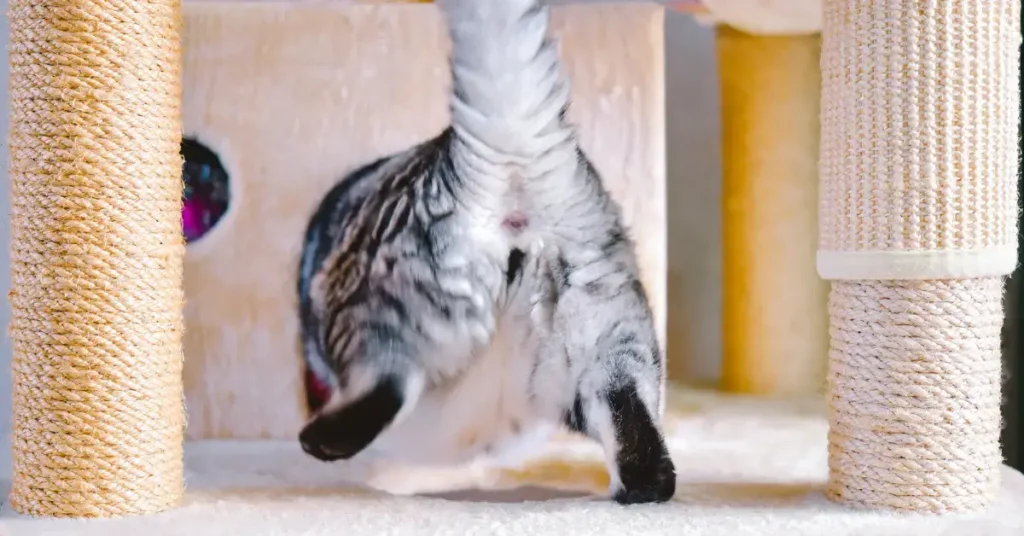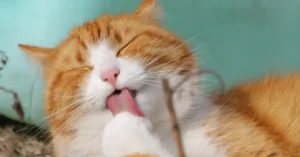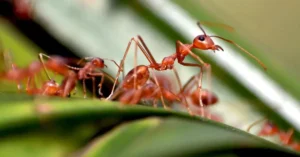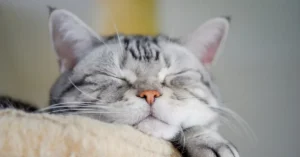It might seem odd, but when your cat puts his butt in your face, he’s actually communicating in a language of love and trust. Learn what’s behind this quirky cat behavior.
Why Does My Cat Put His Butt in My Face
We all love our feline friends, and their behavior can sometimes be puzzling. By looking into their unique ways of bonding and communicating, we can get insights into the affectionate and sometimes odd behaviors they display towards us.
Cat Behavior and Social Bonds
Cats form social bonds with other cats and humans through various behaviors that may seem mysterious to us. While kitties value their personal space, they also seek companionship. Behaviors such as nuzzling, rubbing, and even the quirky habit of putting their butts in our faces are all part of how cats establish trust and affection. It’s their way of saying they feel safe around us. For example, when a cat exposes its rear, it’s actually a sign that it considers us part of its in-group, a behavior starting as early as the kitten stage with their mother cats.
The Language of Feline Love
Now, onto the language of feline love, which is as rich and complex as any language out there. It’s all about body language and pheromones. Cats use their tails, ears, eyes, and body postures to communicate. When your cat is rubbing against you or grooming you, it’s not just seeking attention, it’s marking you with its scent to signal to other cats that you’re taken. Licking and other grooming behaviors are signs of love and care, harkening back to the days when they were kittens being licked clean by their moms.
Our cats can’t speak our language, but their actions speak volumes about the love and bond we share with them. Through communication and body language, they show us how comfortable and vulnerable they are willing to be around us. It’s a true instinct of trust in their human companions.
So next time your cat presents its rear end to you, remember it’s a rather unique, maybe even awkward, stamp of feline affection.
Marking Their Territory: Scent and Safety
When our feline friends put their tails up and present their bottoms, they’re engaging in a complex world of scent communication and safety. Let’s explore the intricate details of their scent glands and how these relate to creating a secure environment.
Scent Glands and Marking Behavior
Cats are equipped with multiple scent glands located on different parts of their bodies, including their cheeks, paws, and the base of their tails. By rubbing their face or brushing their body against us, they release pheromones to mark their territory. It’s not just about claiming space; it’s a sign of affection and a way to make their environment familiar. When they present their hindquarters, the action of our cats’ raised tails can be a sign of greeting, offering their own unique odor for our detection.
The Need for a Safe and Known Environment
Our fuzzy companions have a deep-rooted need to feel safe and secure in their surroundings. By marking us with their pheromones, they’re not just saying we’re a part of their territory; they’re also creating a known environment where they feel comfortable. This marking behavior extends beyond social interactions—it’s fundamental to their sense of health and well-being. By understanding this, we can be more empathetic and respectful about our pets’ peculiar ways of laying claim to their—and our—personal space.
Health and Comfort: Signs and Considerations
When our feline friends exhibit behaviors like presenting their back end, we often wonder about the underlying reasons, which frequently relate to their health and sense of comfort. Let’s explore how to interpret these signs and consider the health-related implications.
Recognizing Comfort and Discomfort in Cats
Comfort indicators:
- Body Language: Purrs, slow blinking, and a raised tail can signal contentment.
- Seeking attention: A cat presenting its rear might be asking to be petted as a show of trust or desire for grooming.
Discomfort indicators:
- Hiding: A cat often seeks solitude when not feeling well.
- Grooming: Excessive grooming, especially near the tail or back end, could indicate skin conditions or flea bites.
Cats naturally use their anal glands to mark territory, which is another reason they might direct their rear toward us. While it might seem peculiar, this behavior is typically a good sign that our cat feels comfortable in our presence and sees us as part of their social group.
Health Checks and Behavioral Signs
Routine Health Checks:
- Vet Visits: Regular check-ups can ensure any health issues are caught early.
- Flea Prevention: Keep up with flea treatments to prevent irritation and bites.
Behavioral Signs to Monitor for Health:
- Attention-Seeking: While a cat seeking to be petted is usually a positive sign, continual insistence might warrant a health check.
- Allergies or Irritation: If your cat’s skin appears irritated, assess for allergies, and consider discussing flea prevention with your vet.
By keeping an eye on our cats’ behavior and maintaining regular veterinary care, we ensure that their funny habits, like putting their butt in our faces, are just quirky signs of affection and not a cause for concern. It’s our love and attention that help us maintain a happy, healthy, and comfortable life for our feline friends.
Frequently Asked Questions
We often see our feline friends exhibiting quirky behaviors that leave us curious and sometimes baffled. So, we’re here to tackle some of the most common head-scratchers about your cat’s strange and endearing actions.
Why do cats raise their backsides when petted?
When we stroke our cat and they raise their backside, it’s generally a sign of enjoyment and an invitation for more petting. It’s a posture that signifies they trust us and are comfortable under our touch.
What is the meaning behind a cat placing its paw on your face?
A cat placing its paw on your face can be a gesture of affection. They may be trying to draw our attention or simply want to be close to us, signaling their familiarity and trust.
What does it indicate when cats present their tails to you?
Cats presenting their tails to you is often considered a greeting. This behavior suggests they consider you a friend and are comfortable with you seeing their most vulnerable parts.
Is there a reason cats like to press their faces against yours while you sleep?
When cats press their faces against ours while we sleep, they’re usually seeking security and comfort. They enjoy the warmth and the bond this close contact creates.
What does it signify when a cat turns its back to you?
If a cat turns its back to you without showing any signs of agitation, it’s likely a display of trust. Cats are predators but also prey, and turning their back means they do not deem you a threat.
How should one interpret a cat rubbing its backside in your face?
When a cat rubs its backside in your face, it’s not just seeking attention—it’s also marking you with their scent, claiming you as part of their trusted family.





